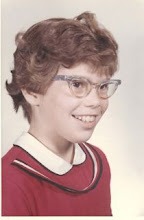 |
| Susan Hill Long, captured at home by her daughter, Molly |
When I was a little girl, my family used to play a simple game
called What’s it Like? Here’s how to
play: one person has in mind an object in the room, and the other players guess
what it is. Let’s say the object was that brown afghan, with the popcorn
stitch. The game begins like so:
“What’s it like?” someone asks. It’s me.
(Now comes the part that always made me feel very odd, very
peculiar.)
“It’s like you.” (It’s
like me?) “It’s like you because it’s knobby.”
One guess, and then the question comes again from the next
in line, “What’s it like?” and the round goes on, the players gathering clues
until the secret object is discovered.
But I’m not knobby,
my young self would think. I’m not made of wool. I’m not
those things at all.
Am I?
On some level, the game would make me question my very
knowledge of myself, which even then (especially then?) I knew to be a slippery
business. I’d go and climb on the
step-stool and look in the mirror and wonder: Who am I? Am I really me? I’d
pinch myself—yes, real—and watch for clues.
In a scene cut from Whistle
in the Dark, the characters Clem and Esther play What’s It Like. Esther asks the question and gathers Clem’s replies
and before long guesses correctly his miner’s cap lamp.
I don’t recall why I ended
up cutting the game from the book. Probably it didn’t do the work I needed the
scene to do, though it would seem to offer some potential—feel free to use it. But
the question – what’s it like?—and especially
the weird and challenging refrain, it’s
like you…, gets at something interesting about writing. In order to write,
a person probably needs to want to make a study of all kinds of things, and appreciate
the curious, provoking ways in which they collide or connect. To take another
look, to collect, to sort by color, by texture, by contrast, by feel and by
feeling, and then to shake the gunnysack and sort it all again.
To take what is green about the object, what
is blue about yourself —and to ask, what’s
it like? What’s it really like? And then, be open to surprise.
Thank you, Sue, for sharing this bit of the behind-the-scenes process of book creating. Clem and Lindy will stay with me for a long, long time, and I, for one, will be re-reading this book to analyze how you so deftly wove in historical details and never once left me feeling I was being fed information. That is a real gift.



It's a shame that got cut from the book. It sounds like such an interesting scene.
ReplyDelete